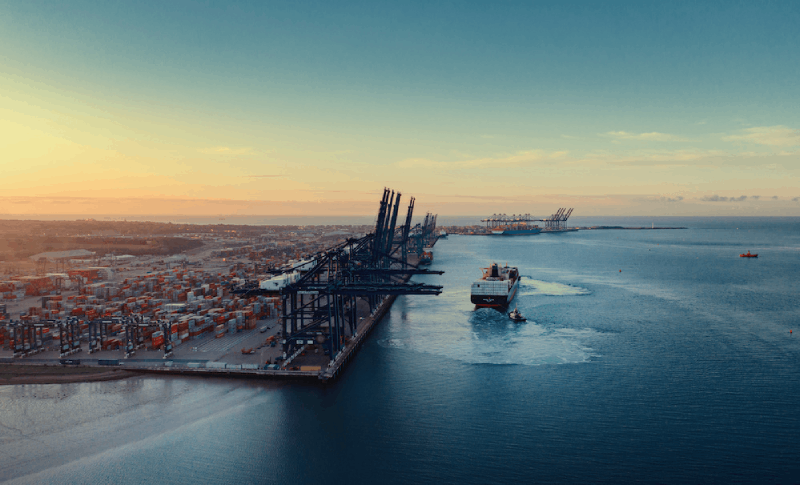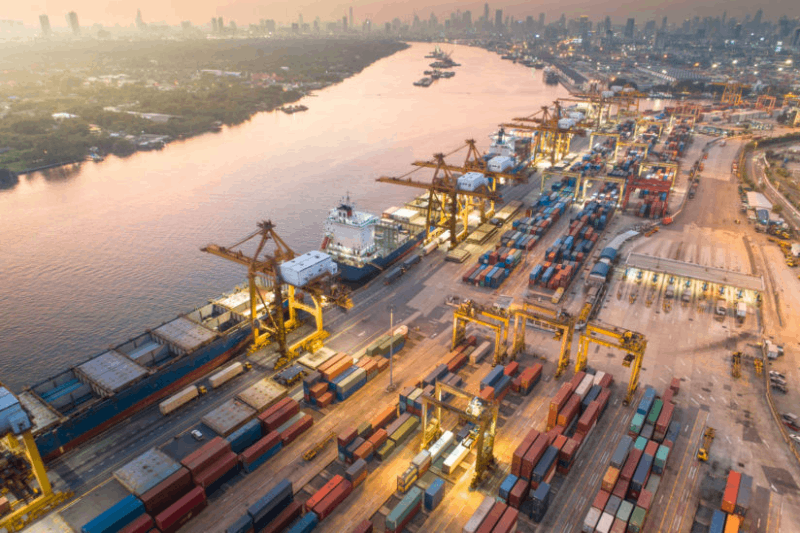Welcome to GLA! Leading the global logistics alliance.


Your location:Home > News > The container market was booming in the first half of the year, can it continue?
Time:2021-07-07 Publisher:Kevin Num:6829

Nowadays, the strong container market allows carriers to seek additional ships to profit from the current record high freight rates in the market.
According to data provided by VesselsValue, a ship valuation website, a total of 277 container ships changed hands in the first half of 2021.
This is a 103.7% increase from the transaction volume of 136 ships in the same period in 2020.
This increase shows that the demand for container ships is strong, which is fully reflected in the chartering market and the second-hand ship market.
At the same time, the total capacity of the changed owners is 922,203 teu, and the average ship size is 3,403 teu.
Compared with last year, the average size of trading ships has shrunk.
Although the number of transactions has more than doubled, the trading capacity has only increased by 40.1%.
In smaller market segments, the demand for new tonnage from ships is particularly high.
So far, the ship type with the largest transaction volume this year is the feeder ship (100-2999TEU), and 167 ships have been traded.
This is an increase of 165.1% compared to the first half of 2020.
The total capacity of these feeder ships is 289,636 TEU, second only to the ultra-Panamax (5000-9999TEU) with a transaction volume of 358874TEU.
54 ships of this ship type were traded in the first half of the year.
Judging from the data on that website, larger ships are the least popular in the second-hand ship market, with only 5 ships over 10,000 TEU changing hands.
In the first half of this year, carrier charters of container ships also reached unprecedented heights, especially MSC, Wanhai and Yixing who have made great efforts to expand their fleet.
In the current market environment, not only the cost paid by shippers has risen sharply, but also the cost faced by chartering companies, paying record fees.
Therefore, the high demand for tonnage is reflected in the price of second-hand ships.
Among the feeder vessels whose prices have been disclosed, the average price in June was $17.6 million.
This is more than four times the average transaction price of $4 million in June 2020.
Unifeeder, which is currently active in the feeder market, also leased vessels at the beginning of this year.
Its CEO Jesper Kristensen said that the price of newly chartered ships has risen sharply.
"We are currently paying three to four times as much for a ship as in the second half of 2020, which is really very expensive."
If the carrier wants to obtain additional capacity in the short term to meet the current market demand, he can only choose to charter a ship and purchase a second-hand ship.
The cost of the former is getting higher and higher, and as the rentable capacity is quickly occupied, the only choice is to buy second-hand ships.
Currently, there is a premium for both of these options.

New ship orders hit a 7-year high
According to Clarkson’s statistics,the number of new ship orders reached 23.8 million CGT for a total of 52 billion U.S. dollars, the highest level since 2014.
It has surpassed the 21.9 million CGT for the whole year of 2020, totaling 47.5 billion US dollars.
However, the current hand-held orders account for only 8% of the existing fleet capacity, which is still close to historical lows.
The main reason for the increase in new ship orders is the overall improvement in the shipping market, especially the container ship market.
In the first half of the year, the Clark Sea Index reached an average of US$21,717, the highest level of semi-annual data since 2008.
Among the orders for new ships in the first half of the year, container ships accounted for more than half of the total, with a total of 12.7 million CGT and US$25 billion.
In contrast, orders for oil tankers and bulk carriers are only 3.5 million CGT and 2.5 million CGT.
The shipyard also said that the current container ship inquiry is still continuing, mainly in the field of new Panamax and small and medium-sized ships.
But oil tanker inquiry is very limited, because the current oil tanker market continues to be weak and the prospects are full of uncertainties.
BIMCO does not seem to be optimistic about the order level for the whole year of this year.
In its latest analysis and forecast, BIMCO pointed out that although the number of container ship orders this year is at a high level, global shipyards are still facing the pressure of insufficient orders.
Based on the current pace of market order growth, it is estimated that the overall new ship orders in 2021 will be the third lowest level in the past 12 years.
2019 the 7th GLA Panel Discussion Wonderful Review
Prev:New Golden Member From Germany—— Insa air sea Logistics GmbHNext:New Golden Member From Italy—— NUMBER 1 INTERNATIONAL
Recommended Membership
Latest News